In 2024, dental care is undergoing a remarkable transformation, thanks to the latest dental implant technology. Innovations such as 3D printing, advanced materials, and digital planning are redefining how implants are designed and placed. These cutting-edge technologies promise not only enhanced precision and customization but also improved patient comfort and outcomes. Explore how these developments are shaping the future of dental care and setting new standards for implant success.
Revolutionizing Smiles: The Latest Dental Implant Technology with 3D Printing Innovations
The latest dental implant technology is being revolutionized by 3D printing. This innovation offers enhanced customization, precision, and efficiency in implant design and production, leading to improved patient outcomes. Discover how 3D printing is transforming dental implants and shaping the future of dental care.
Customization and Precision
Tailored Fit: 3D printing allows for the creation of highly customized dental implants that match the unique anatomy of each patient’s mouth. By using digital scans and impressions, dentists can design implants that fit perfectly, which enhances both comfort and functionality.
High Accuracy: The precision of 3D printing technology ensures that implants are manufactured with high accuracy. This reduces the likelihood of complications and the need for adjustments during or after the placement procedure.
Complex Geometries: 3D printing enables the production of implants with complex geometries that are difficult or impossible to achieve with traditional manufacturing methods. This includes intricate internal structures that can promote better integration with bone.
Streamlined Production Process
Reduced Lead Time: The process of creating traditional dental implants often involves multiple steps and long waiting times. 3D printing can produce implants relatively quickly, often within a few hours to a couple of days, which accelerates the overall treatment timeline.
On-Demand Manufacturing: Dentists can print implants on-site or in-house, reducing the dependency on external labs and potentially cutting down the overall cost and time of the procedure.
Minimal Waste: 3D printing is a subtractive manufacturing process, meaning it uses only the material needed to create the implant, leading to minimal waste compared to traditional subtractive methods like milling.
Improved Patient Outcomes
Enhanced Comfort: With custom-designed implants, patients experience a better fit and less discomfort, which can lead to quicker adaptation and a more natural feel.
Faster Recovery: The precision and customization of 3D-printed implants can contribute to improved osseointegration (the process where the implant integrates with the bone), potentially resulting in a shorter recovery period.
Less Invasive Procedures: The ability to pre-plan and produce highly accurate implants can lead to less invasive procedures, as the need for adjustments and modifications during surgery is minimized.
Cost Considerations
Economic Impact: While the initial investment in 3D printing technology can be high, the long-term savings on materials, labor, and reduced turnaround times can offset these costs. Additionally, on-site production can lead to cost savings by reducing reliance on external labs.
Affordability for Patients: As 3D printing technology becomes more widely adopted and costs decrease, the affordability of customized dental implants may improve, making advanced treatments more accessible to a broader range of patients.
3D printing is transforming the field of dental implants by enhancing customization, precision, and efficiency. As technology continues to advance, it is likely that these benefits will expand, leading to even better patient outcomes and more innovative solutions in implant dentistry.
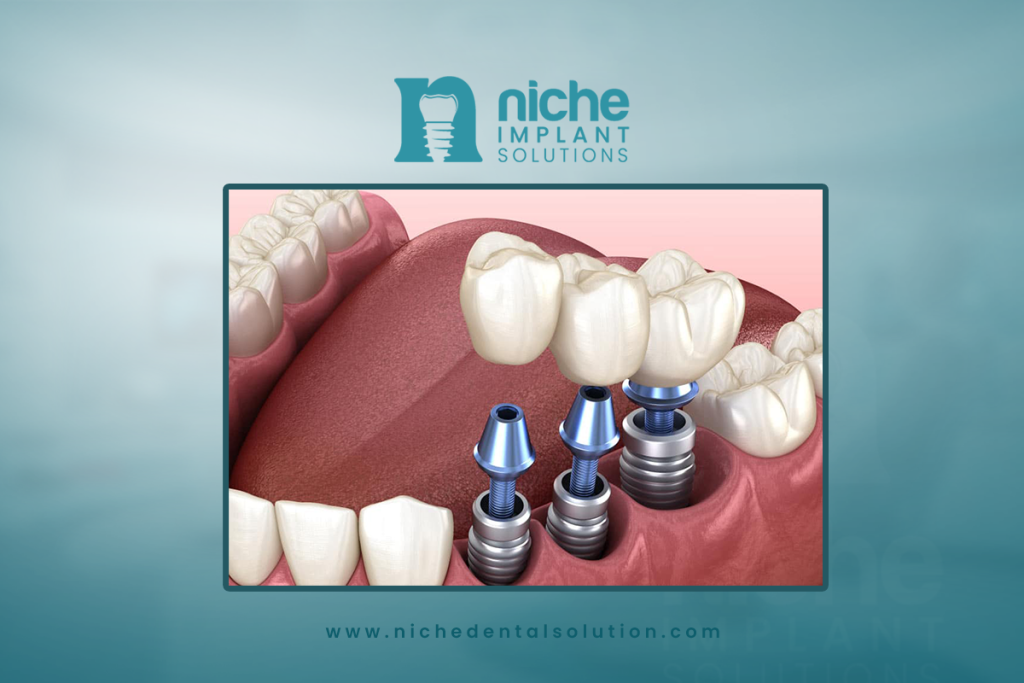
Revolutionizing Dental Care: The Latest dental implant technology and CAD/CAM Innovations
In 2024, dental care is being revolutionized by the latest dental implant technology and CAD/CAM (Computer-Aided Design/Computer-Aided Manufacturing) technology. These innovations are enhancing the precision, efficiency, and comfort of dental implants.
Digital Impressions: Precision and Comfort
Traditional dental molds are being replaced by digital impressions, which use high-resolution scanners to create accurate 3D images of the teeth and gums.
Key Benefits:
Enhanced Accuracy: Digital scans provide a precise representation, minimizing errors and improving the fit of implants.
Increased Comfort: The process is non-invasive and more comfortable than traditional molds.
Faster Results: Scans are quickly transmitted, speeding up the design and manufacturing process.
CAD/CAM Technology: Customization and Efficiency
CAD/CAM technology utilizes digital impressions to design and produce implant components with high precision.
How It Works:
Computer-Aided Design (CAD): Custom designs are created using advanced software, tailored to the patient’s anatomy.
Computer-Aided Manufacturing (CAM): These designs are then produced using milling machines or 3D printers, ensuring accurate and durable implants.
Benefits:
High Precision: Exact specifications reduce the need for adjustments and enhance implant fit.
Customization: Implants and prosthetics are tailored to individual needs for better outcomes.
Efficiency: Streamlined design and manufacturing reduce treatment time and the number of appointments.
latest dental implant technology and CAD/CAM systems are transforming dental implants, making procedures more accurate, comfortable, and efficient.
Innovative Materials Revolutionizing Dental Implants: Strength, Aesthetics, and Performance
latest dental implant technology is significantly improving their performance and longevity. Key innovations include:
Zirconia Implants
- Aesthetic Benefits: White and natural-looking, ideal for visible areas.
- Biocompatibility: Reduces allergic reactions and integrates well with bone.
- Corrosion Resistance: Maintains appearance and function over time.
Consideration: May not be as strong as titanium in high-stress areas.
Titanium Alloys
- Strength: Provides exceptional mechanical strength, suitable for various clinical needs.
- Osseointegration: Promotes effective fusion with bone, ensuring stability.
- Proven Success: Long track record of reliability.
Consideration: Metallic appearance might be less desirable for visible areas.
Bioactive Materials
- Hydroxyapatite (HA): Enhances bone growth around implants.
- Bioactive Glasses: Stimulate bone formation and improve implant bonding.
- Surface Modifications: Improve bone attachment and speed up healing.
Benefits: Accelerate healing and improve implant success rates.
latest dental implant technology—zirconia, titanium alloys, and bioactive substances—are setting new standards in dental implants by improving aesthetics, strength, and integration. These advancements promise better patient outcomes and expanded treatment options.
Balancing Costs and Access: The Impact of the Latest Dental Implant Technology
The latest dental implant technology has improved precision and patient outcomes, but they also pose questions about cost and accessibility. Here’s a brief overview of how these factors are evolving:
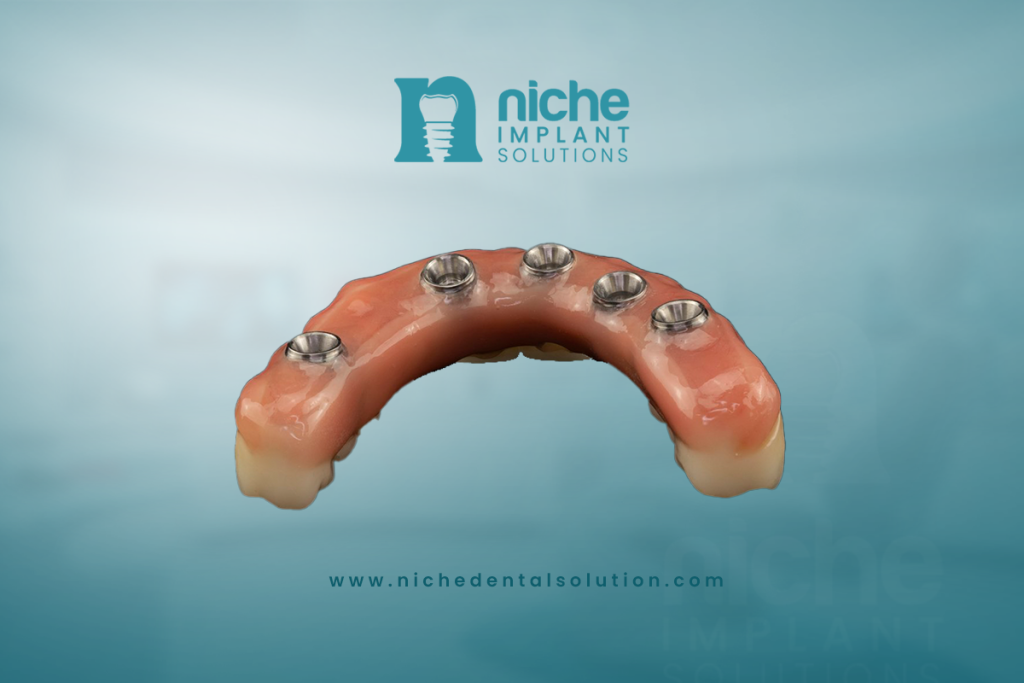
Cost of Advanced Implant Technology
Initial Expenses: Cutting-edge technologies such as digital impressions, CAD/CAM systems, and advanced materials like zirconia can increase initial costs. High-tech equipment and sophisticated procedures contribute to these higher prices.
Material Costs: Materials like zirconia and bioactive coatings are more expensive than traditional titanium implants. However, their benefits, such as enhanced aesthetics and better bone integration, can justify the higher costs.
Long-Term Savings: Despite higher upfront costs, these technologies can lead to savings by reducing procedural errors and adjustments, potentially lowering overall treatment expenses and extending implant longevity.
Also read: Dental implant vs. bridge : Discover the Best Option for Your Oral Health
Enhancing Accessibility
Efficiency: Advanced technologies streamline the implant process, reducing appointment times and complexity. Digital impressions, for example, simplify procedures and can make implants more affordable over time.
Wider Availability: As more dental practices adopt these technologies, costs can decrease due to economies of scale. Additionally, more cost-effective solutions are emerging, increasing patient access.
Insurance and Financing: Many practices offer financing options and work with insurance providers to make advanced implants more accessible. Flexible payment plans help manage the higher costs.
Impact on Patient Care
Improved Outcomes: latest dental implant technology leads to more accurate diagnostics and customized implants, which can improve treatment results and reduce the need for follow-up procedures.
Broader Access: Increased adoption of these technologies means more patients can benefit from high-quality dental care, contributing to more equitable access to advanced treatments.
Future Trends
Cost-Effective Innovations: Ongoing developments are focused on reducing costs while maintaining quality. Improved manufacturing processes are expected to make these technologies more affordable.
Global Reach: As costs decrease and technologies become more accessible, global disparities in dental care may be addressed, bringing advanced treatments to underserved regions.
The latest dental implant technology offers significant benefits but comes with higher costs that can affect accessibility. Efforts to improve efficiency, reduce costs, and expand financing options are helping to make these advancements more available. As technology continues to evolve, it is expected to become more cost-effective, enhancing access to high-quality dental care for a broader range of patients.
Niche Dental Solutions: Setting New Standards with the latest dental implant technology
Niche dental solutions are revolutionizing dental implants with the latest dental implant technology. By focusing on specialized techniques and materials, these innovators are setting new standards in the field.
Advanced Materials
Zirconia Implants: Known for their natural appearance and biocompatibility, zirconia implants offer both durability and aesthetic appeal.
Bioactive Materials: Innovations like hydroxyapatite enhance bone integration, improving implant stability and reducing healing times.
Digital Technologies
Digital Impressions: High-resolution digital scans replace traditional molds, ensuring better fitting implants and faster procedures.
CAD/CAM Systems: These technologies enable precise customization of implants, improving both function and appearance.
Innovative Placement Techniques
Robotic Surgery: Robotic systems guide implant placement with high precision, reducing errors and enhancing outcomes.
Guided Surgery: Computer-guided methods ensure accurate implant positioning through detailed pre-surgical planning.
Personalized Care
Customized Plans: Advanced technologies allow for tailored treatment plans, addressing individual patient needs for optimal results.
Improved Experience: Minimally invasive techniques and digital workflows enhance patient comfort and efficiency.
Niche dental solutions are at the forefront of latest dental implant technology, setting new benchmarks with advanced materials, digital tools, and innovative techniques. These advancements are improving implant precision, outcomes, and patient experiences, shaping the future of dental care.
Contact Niche Dental Now : Experience the Difference
Call us on +201011687002
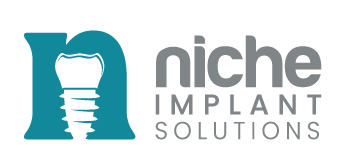
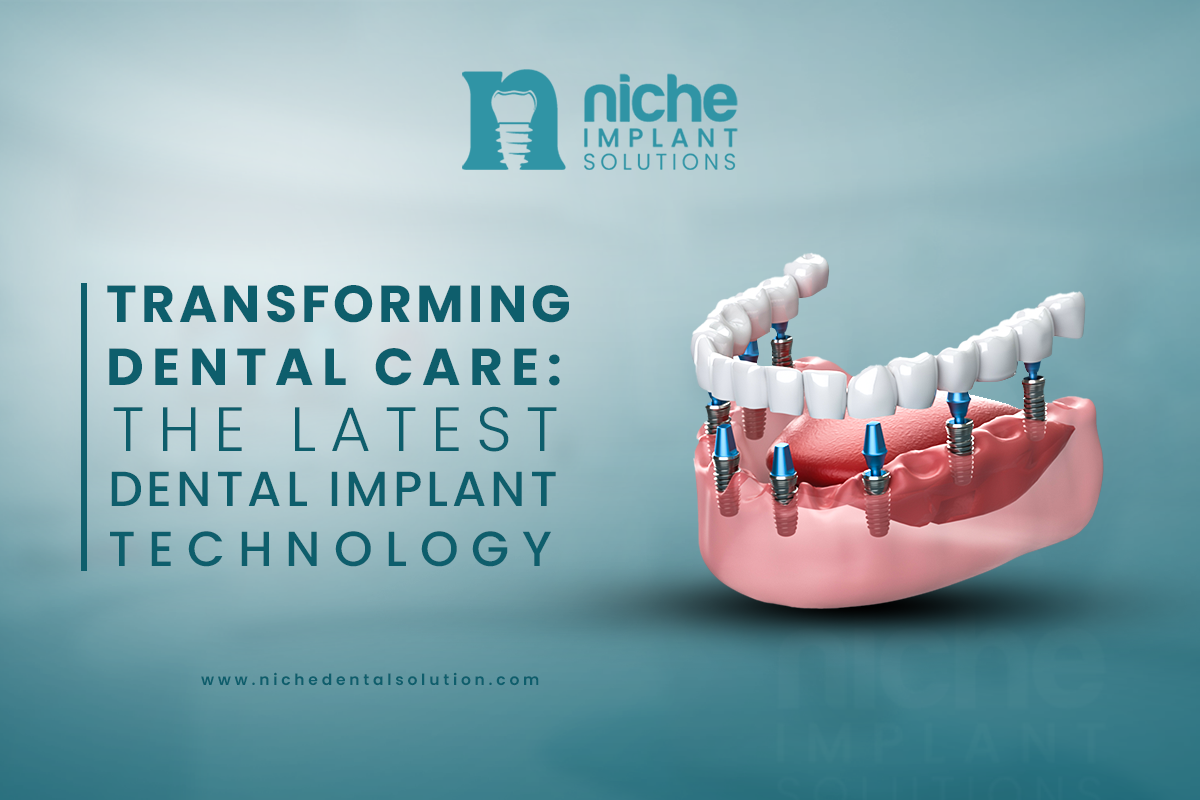


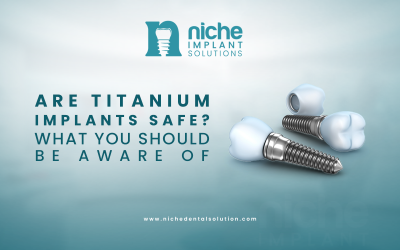
0 Comments